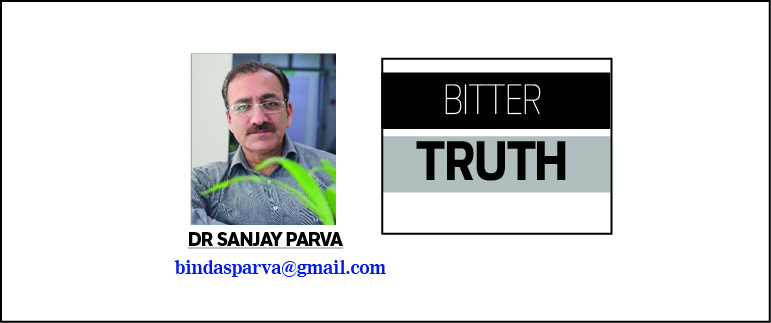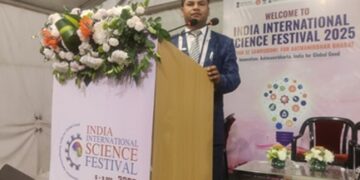By: Er Umair Ul Umar
In childhood we love math because it’s introduced in a fun, playful way counting games, patterns, and simple puzzles. It feels like a discovery process, However, as we grow older, math becomes abstract and complex requiring more effort, memorization and problem solving. Contrastingly, Mathematics is the backbone of AI, enabling algorithms to process data, learn from patterns, and make intelligent decisions. Without mathematical foundations, AI would not be able to perform tasks like image recognition, speech synthesis, or autonomous driving.
In summary, mathematics provides the theoretical foundation and practical tools necessary for the development, optimization, and application of Machine Learning and AI technologies. It enables the creation of models that can learn from data, make predictions, and solve complex problems across various domains.
Mathematics plays a fundamental role in the development and functioning of Artificial Intelligence (AI). Here are some key areas where mathematics is crucial:
- Algebra
Linear Algebra which we study in 10th Class is used in neural networks, deep learning, and computer vision. Linear algebra is essential for operations like matrix multiplication, eigenvalues, and eigenvectors (studied in Engineering Mathematics), which are used in algorithms like Principal Component Analysis (PCA) and Singular Value Decomposition (SVD). Concepts which we study in 11th class like matrices, vectors, and tensors are essential for operations in AI models. Example: Google’s TensorFlow framework uses tensors (multi-dimensional arrays) extensively. AI models, especially in machine learning, often deal with large datasets represented as vectors and matrices.
- Mathematical Analysis
Mathematical Analysis also known as Calculus which we study in 11th and 12th Classes helps in optimizing AI models, particularly in training neural networks. Gradient Descent, a key optimization method, relies on differentiation. Example: Backpropagation in deep learning uses partial derivatives to update weights. Calculus is used to optimize AI models. Techniques like gradient descent rely on derivatives to minimize loss functions, which measure the difference between predicted and actual outcomes. In neural networks, backpropagation uses partial derivatives to update the weights of the network, improving its accuracy over time.
- Probability & Statistics
These units we study from 8th class, essential for handling uncertainty, making predictions, and decision-making. Bayesian networks, Hidden Markov Models, and Gaussian distributions (studied in Engineering mathematics) are widely used. Example: AI applications in speech recognition and natural language processing (NLP). Probability theory helps in modeling uncertainty and making predictions. Bayesian networks, for example, use probability to make inferences. Statistical methods are used for data preprocessing, hypothesis testing, and understanding data distributions, which are crucial for training AI models.
- Optimization
AI models require optimization techniques to minimize errors. Techniques like convex optimization, linear programming, and evolutionary algorithms help AI learn efficiently. Example: Training large language models like ChatGPT. Many machine learning algorithms involve solving optimization problems. Graph theory is used to model relationships and networks, such as social networks, recommendation systems, and knowledge graphs. Search Algorithms: Algorithms like Dijkstra’s and A* are used in pathfinding and optimization problems within AI.
- Discrete Mathematics
Again this is taught in 11th class. It supports logical reasoning, decision trees, and combinatorial problems. Example: AI in game theory and cryptography. Discrete mathematics provides the foundation for logic, algorithms, and computational complexity, which are essential for designing efficient AI algorithms.
- Information Theory
It is being taught in 4th Semester of Engineering which helps to understand the data compression, entropy calculation, and error detection. Example: AI in communication systems and machine learning model efficiency.
The lack of interest in mathematics among students in Kashmir, despite the growing importance of AI, can be attributed to several factors:
1. Learning barriers and bottlenecks
- Mathematics is often taught as rote learning which focuses on repetition and memorization, theoretical way without practical applications, making it less engaging.
- Digital Divide: Many students and educators may not fully understand the role of mathematics in AI and modern technology. Teachers are hesitant or unwilling to integrate new technologies into their teaching
2. Gaps in AI and STEM synergy
- Low AI & STEM Integration: Schools do not have proper AI and coding curricula, limiting students’ exposure. AI powered Simulations use AI to model complex Scientific phenomena- Climate Change, Chemical Change. Data Analysis, AI algorithms can analyse large scientific datasets-Genomics and Astronomy
- Limited exposure about online learning platforms and Limited access to high-speed internet, labs, and AI tools restricts hands-on learning opportunities.
3. Political and social context
- Sociopolitical Instability creates havoc, internet shutdowns, and school closures affect consistent learning. And here in Kashmir we are the worst affected.
- Our parents demand us only two professions from early childhood, either to be a doctor or an engineer. With the result of this restricted mindset, many students prioritize medicine and civil services over STEM fields like AI and data science.
4. Cognitive Limitations
- Demotivating the students by pros and cons of maths leads to math phobia. A perception that math is difficult leads to anxiety and not taking maths as a basic subject.
- Mathematics teacher as a role model isn’t seen in Kashmir valley with the result it seems this subject is less rewarding. So this perception diminishes the status of mathematics teachers as role models.
5. Professional and Fiscal Uncertainty
- As unemployment is at its peak in Kashmir valley, students are choosing the subjects that are seen as job oriented. They don’t have enough time to rethink a fair choice related to their potential. And it is difficult that students start acepting that AI and mathematics do not offer stable career opportunities in the local job market.
- Pursuing AI often requires moving to other cities, which can be challenging for many families. Though we have Dr Mohammad Zamir Afsar, a british Applied Mathematician from Kashmiri descent who has worked as a research fellow at NASA’s Glenn Research Center. His research focuses on the dynamics of noise in jet aircraft.
Strategic Approach
- Connect Math to real Life-Calculating distances in Kashmir valleys to make learning interactive and fun
-
- Gamify Math Learning like math puzzles
- Use AI based technology and visual tools like Augmented Reality (AR) used to explore 3D shapes or mathematical models in an immersive way. Workshops & AI Awareness Programs in Schools and universities should promote AI-related careers.
- Scholarships & Internships will encourage students to participate in online AI courses and competitions.
- Government & Private Initiative must invest in STEM education, coding bootcamps, and AI labs in schools.
- Celebrate Math Successes like we should organize Math fairs with fun activities, exhibitions and challenges
By addressing these challenges, students in Kashmir can develop a stronger interest in mathematics and recognize its importance in the age of AI.
The writer is working as IT Teacher in Govt. Girls Higher Secondary School Yaripora, Kulgam




